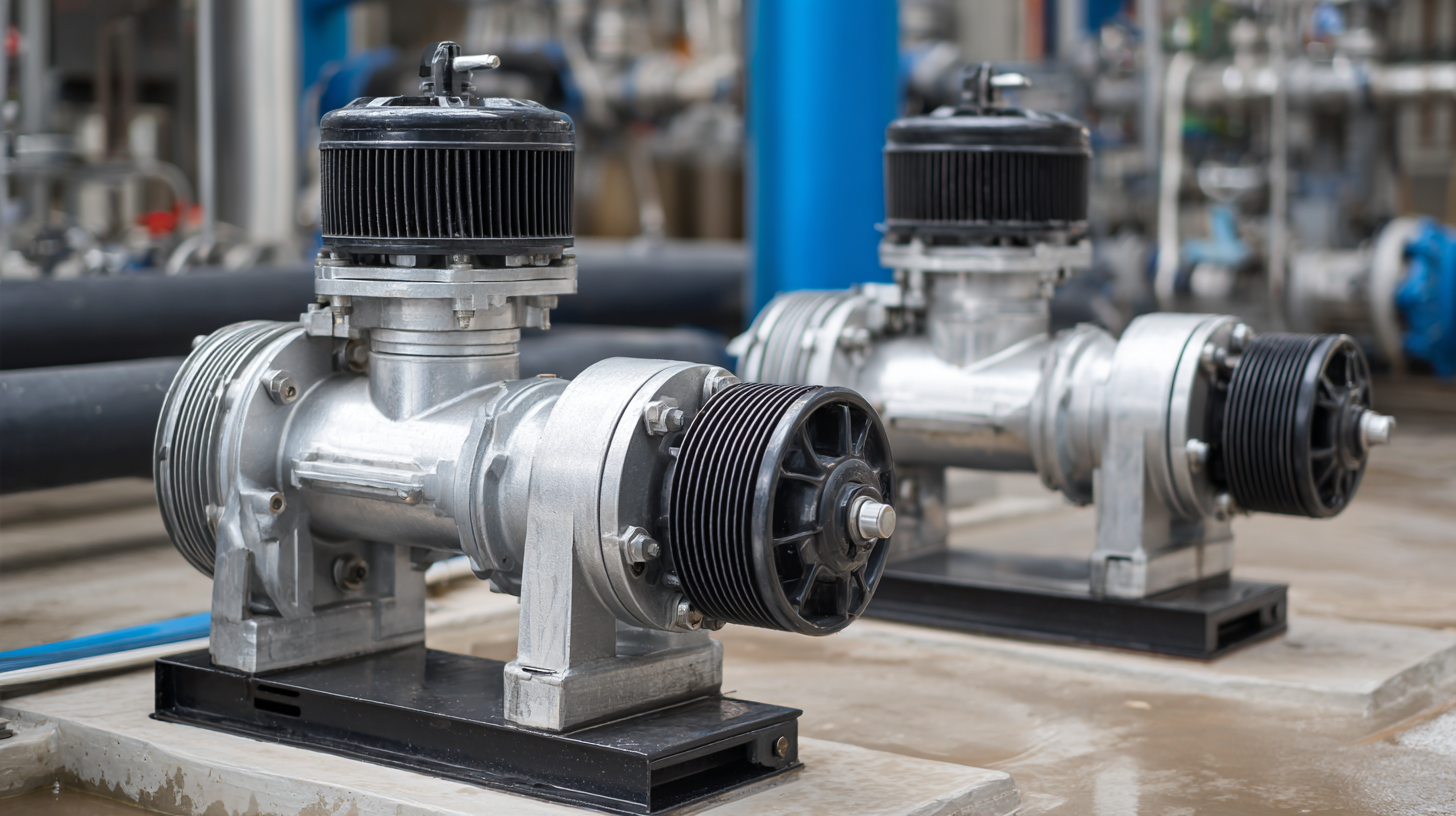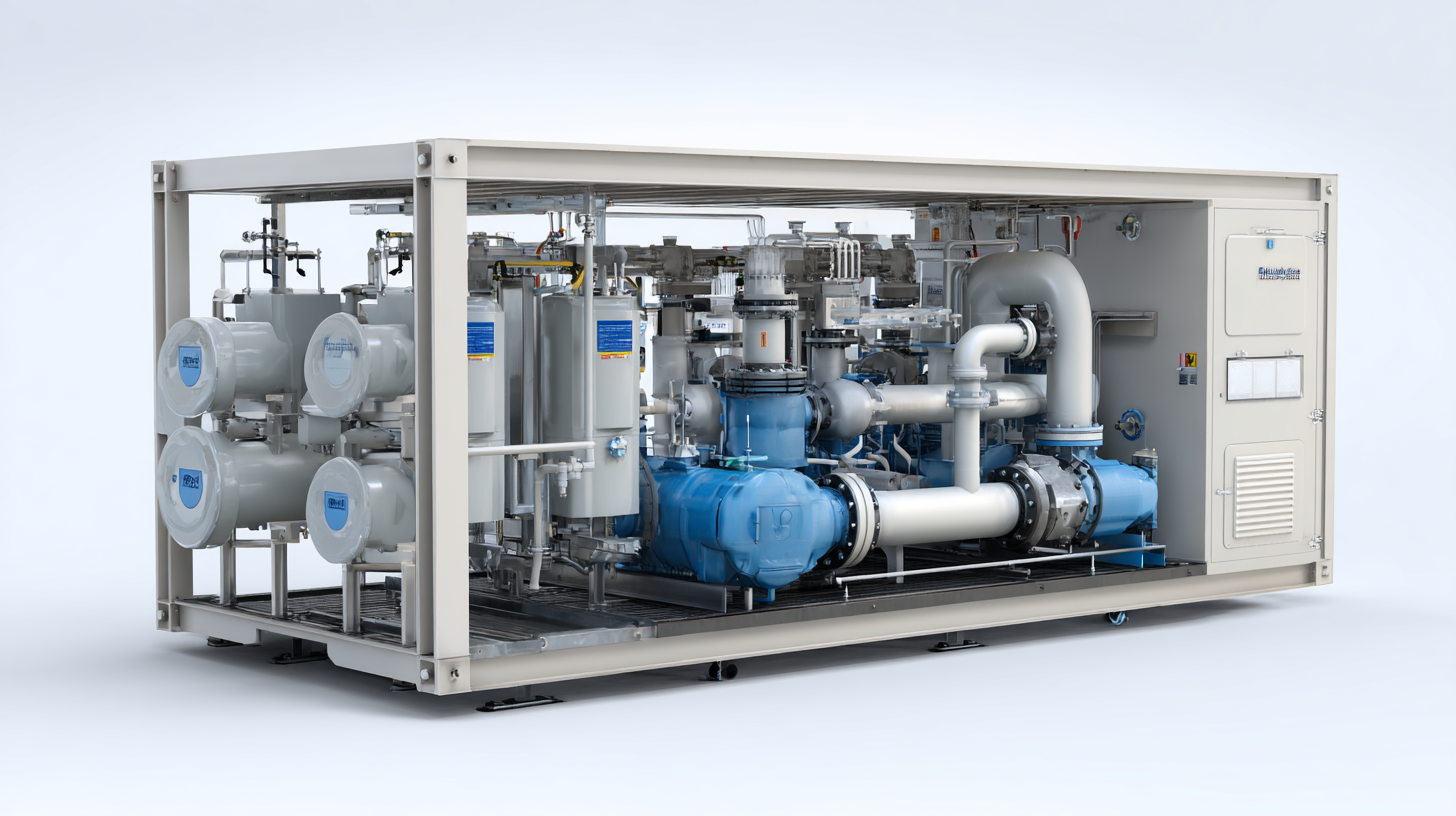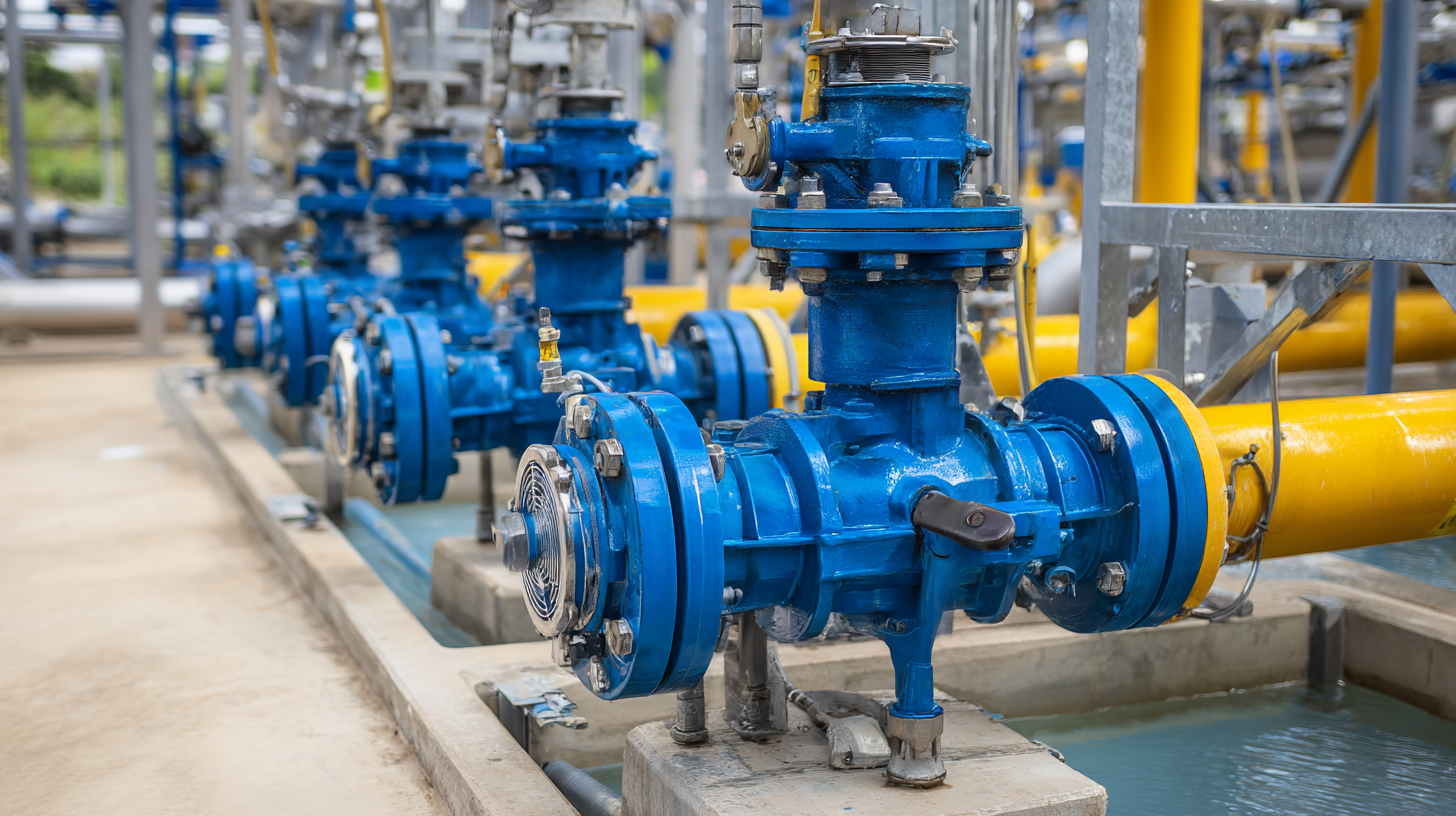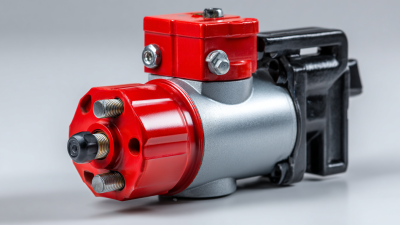Maximizing Efficiency with Well Pressure Pumps for Sustainable Water Solutions
In the quest for sustainable water solutions, maximizing efficiency with well pressure pumps emerges as a pivotal strategy. According to a report by the International Water Association, approximately 70% of the world’s fresh water is utilized for agricultural purposes, emphasizing the urgent need for efficient water management systems. Well pressure pumps serve as a critical tool in this endeavor, enabling the extraction and distribution of groundwater while minimizing energy consumption. Research indicates that optimized well pressure pump systems can lead to a 30% reduction in energy costs, significantly impacting both operational budgets and environmental sustainability. As industries increasingly adopt renewable energy sources and automated control systems, well pressure pumps are poised to play an essential role in creating resilient water supply systems that align with global sustainability goals. By leveraging advanced technologies and best practices, stakeholders can effectively enhance the performance of well pressure pumps, ensuring reliable access to water in an era marked by changing climate conditions and rising demand.

Identifying the Key Benefits of Well Pressure Pumps in Water Management Systems
Well pressure pumps play a crucial role in sustainable water management systems by enhancing the efficiency of water distribution and ensuring a consistent water supply. One of the key benefits of using these pumps is their ability to maintain a steady pressure, which reduces the risk of water wastage and enhances the overall reliability of the water supply network. This is particularly important in regions with fluctuating water demand or limited resources, as it allows for optimal utilization of the available water.

Additionally, well pressure pumps contribute to energy savings and lower operational costs. By efficiently regulating water flow and pressure, these pumps minimize energy consumption, thereby reducing the carbon footprint associated with water management. Moreover, modern well pressure pumps are designed with advanced technology, allowing for remote monitoring and automated adjustments that further increase their efficiency. Implementing such systems not only leads to better water management but also supports the long-term sustainability of water resources in various communities.
Understanding the Optimal Pump Selection Process Based on Flow and Pressure Requirements
 When it comes to optimizing efficiency in water management systems, the selection of well pressure pumps is crucial, particularly when considering flow and pressure requirements. According to a report from the International Water Association, efficiency losses in pump systems can exceed 30% due to improper sizing and selection. Understanding the specific flow rates and pressure demands of your water system can lead to significant energy savings and enhanced performance.
When it comes to optimizing efficiency in water management systems, the selection of well pressure pumps is crucial, particularly when considering flow and pressure requirements. According to a report from the International Water Association, efficiency losses in pump systems can exceed 30% due to improper sizing and selection. Understanding the specific flow rates and pressure demands of your water system can lead to significant energy savings and enhanced performance.
Proper pump selection hinges on a thorough assessment of these requirements. For instance, the Hydraulic Institute recommends matching pump head and flow rates with the system's hydraulic profile to ensure optimal operation. It is essential to utilize tools like pump performance curves and system resistance calculations. A comprehensive analysis not only aids in selecting the right pump type, whether it be centrifugal or positive displacement, but also ensures that the system maintains operational reliability while adhering to sustainable practices. Utilizing data analytics and simulation software can further enhance decision-making, allowing for a more precise alignment of pump capabilities with the specific needs of the water delivery system.
Evaluating Energy Efficiency Metrics for Sustainable Water Extraction Practices
Energy efficiency metrics play a crucial role in evaluating sustainable water extraction practices, especially when it comes to utilizing well pressure pumps. These pumps are essential for maximizing water resource efficiency, which is increasingly vital as communities and industries face growing pressures related to water scarcity and environmental sustainability. By systematically assessing the energy consumption associated with these pumps, we can identify optimization opportunities that not only improve operational efficiency but also minimize the environmental footprint of water extraction activities.
Innovations in water pump technology, alongside strategies to monitor and enhance energy utilization, can lead to sustainable solutions that reflect a commitment to ecological stewardship. As seen in ongoing advancements across various sectors, such as lithium extraction and clean energy developments, the integration of rigorous energy efficiency metrics can drive progress in sustainable practices. Employing these metrics can facilitate the development of more effective systems for water management, ensuring that the future of water solutions aligns with the overarching goals of sustainable growth and environmental protection.
Maximizing Efficiency with Well Pressure Pumps for Sustainable Water Solutions
| Pump Model | Flow Rate (L/min) | Power Consumption (kW) | Energy Efficiency Ratio (EER) | Average Operational Cost ($/month) | Sustainability Rating (1-5) |
|---|---|---|---|---|---|
| Model A | 150 | 5.5 | 27.27 | 120 | 4 |
| Model B | 180 | 6.0 | 30.00 | 140 | 5 |
| Model C | 120 | 4.2 | 28.57 | 100 | 4 |
| Model D | 200 | 7.5 | 26.67 | 160 | 5 |
Integrating Smart Technology to Enhance Well Pressure Pump Performance
The integration of smart technology in well pressure pumps represents a major advancement in optimizing water resource management. By utilizing sensors and IoT (Internet of Things) connectivity, these pumps can monitor performance in real-time, adjusting their operation based on demand and environmental conditions. This not only enhances the efficiency of water distribution but also significantly reduces energy consumption and operational costs, making it a sustainable choice for water solutions.
Furthermore, smart technology enables predictive maintenance, allowing for timely interventions before potential failures occur. Advanced algorithms analyze data trends, providing insights that help operators make informed decisions about maintenance schedules and pump performance. As a result, well pressure pumps become more reliable and less prone to breakdowns, contributing to a consistent water supply. This integration of technology is essential for meeting the increasing global demand for sustainable water management practices, ensuring that resources are used efficiently and responsibly.
Assessing Long-term Economic Impacts of Well Pressure Pumps for Water Sustainability Solutions
Well pressure pumps are increasingly recognized for their role in sustainable water solutions, particularly in maximizing efficiency and minimizing costs over the long term. By assessing the economic impacts of these systems, we find that investing in high-quality well pressure pumps can lead to significant savings in water management. The initial investment in efficient pumps often results in lower energy consumption, reduced maintenance costs, and improved water distribution, which in turn enhances the overall sustainability of water supply systems.
**Tips**: When choosing a well pressure pump, consider models with variable frequency drives (VFDs) which can adjust the pump speed based on demand, optimizing energy use. Regular maintenance checks can also extend the life of your pump, further reducing long-term costs.
Additionally, well pressure pumps offer a range of benefits beyond just financial savings. They contribute to water conservation efforts by ensuring that water is sourced efficiently and effectively. This is particularly vital in areas facing water scarcity, where sustainable solutions can significantly influence the community’s resilience against droughts and other environmental challenges. Integrating smart technology with these pumps can enhance monitoring, providing data that helps in making informed water management decisions.
Maximizing Efficiency with Well Pressure Pumps for Sustainable Water Solutions
This chart illustrates the annual cost savings and efficiency improvements associated with the use of well pressure pumps over a decade. The data showcases how investing in sustainable water solutions can lead to significant long-term economic benefits.
Related Posts
-

How to Choose the Right Water Well Pump for Your Home Needs
-

Mastering Sucker Rod Pump Efficiency through Advanced Techniques and Industry Insights
-

How to Select the Right Fracking Pump for Your Oil and Gas Operations
-

Exploring Market Trends: Ultra Jet Pumps at the 138th Canton Fair 2025 in China
-

Understanding the Benefits of a Well Pressure Pump for Your Home Water Supply
-

20 Best Hydraulic Gas Pumps for Unmatched Performance in 2023
